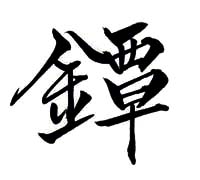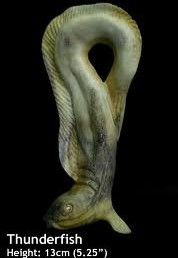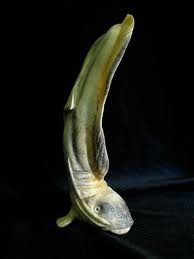|
Kikukamonsho Menuki
|
 |
|
Kikukamonsho Menuki
|
 |
|
Edo Period (ca. 1750). Each menuki made from the same mold, shakudo with gold inlay. The design of a 'bud' of a chrysanthemum, the body of a 'thunderfish', and the tail showing the roots of the chrysanthemum. The inside of the buds could be 'cloisonne' of a matching color. I have not found the legend that this design depicts. 3.3cm long x 0.4cm tall x 0.8cm at widest part.
|
 |
  'Thunderfish' is the Japanese name for torpedo's used during World War 2 by their planes and submarines. |
 |
 |
 |
A stylized chrysanthemum pattern derived from the imperial crest used on the pendant, *gatou ??, of semi-circular convex tiles or as a band of small tiles called *irakagawara ??, that have the pendant, decorated with a chrysanthemum motif. The earliest known kikkamon pendants date from the Momoyama period (1568-1615) and were unearthed at the site of Fushimijou ???, Kyoto. Another was unearthed in Kyoto.
Some fine examples were also found in Ootsu ?? in Shiga prefecture. The number found during the Edo period (1616-1868) increased. A few in Kyoto in Higashiyama were excavated from Kiyomizudera ???. This motif was used widely without restriction during Edo period (1616-1868) on the built up tiles above the ridges of various buildings, but after 1868, its use was strictly controlled from the time of the Meiji Restoration because the pattern was used for the crest of the Emperor.